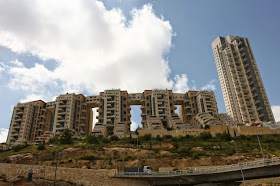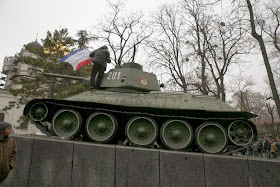by Nancy Weirh | Nature
 |
| * Fukushima Daiichi Nuclear Power Plant - faces slow decommissioning. (Credit: via Industry Week). |
On Saturday, I wrote about the speed with which the Great Kanto Highway in Naka, Japan was repaid (a remarkable six days) after the quake. But that road one of the many different public infrastructure damaged when the March 2011 quake struck.
Today, I am prompted to write on another facility that was subject of global concern following the incident - The damage to the Fukushima Daiichi Nuclear Power Plant.
Radiation levels were subject of constant monitoring for days, then weeks and eventually months after the Tsunami, arising from the quake produced high wall waves of salt water that poured into and damaged the plant.
It's been five years since that disaster and while life has largely returned to normalcy, Fukushima is still clearwing up.
On Wednesday last week, the chief of Fukushima Daiichi Nuclear Plant warned of the biggest risk that the crippled plant can still face - another major earthquake and or Tsunami. The 2011 quake was a powerful underwater quake of 9.0 on the Richter scale. Seawater from the ocean rose to unprecedented levels, swamping its cooling systems and causing reactor meltdowns.
Today, I am prompted to write on another facility that was subject of global concern following the incident - The damage to the Fukushima Daiichi Nuclear Power Plant.
Radiation levels were subject of constant monitoring for days, then weeks and eventually months after the Tsunami, arising from the quake produced high wall waves of salt water that poured into and damaged the plant.
It's been five years since that disaster and while life has largely returned to normalcy, Fukushima is still clearwing up.
On Wednesday last week, the chief of Fukushima Daiichi Nuclear Plant warned of the biggest risk that the crippled plant can still face - another major earthquake and or Tsunami. The 2011 quake was a powerful underwater quake of 9.0 on the Richter scale. Seawater from the ocean rose to unprecedented levels, swamping its cooling systems and causing reactor meltdowns.
 |
| * Fishing boats were swept in land by high floods that flowed through communities. (Credit: via Wiki). |
 |
| * Lose livestock roamed the streets. |
Isolation zones that were quickly established, were extended almost as quickly, as a massive evacuation of survivors involving hundreds of thousands of residents within a 20 km (or 12 mile) radius of two Fukushima Nuclear Power Plants in Daiichi and Daini began.
The Japanese earthquake of March 11, 2011 triggered a major tsunami that swept out entire villages, damaged Fukushima Daiichi Nuclear Power Plant and caused major disruption to the country's stock market.
But five years on, there is a better news - the chaos of disaster won’t be repeated. But how can he be so sure?
Akira Ono, head of the plant told journalists as the plant was opened to the world media to see how far the clean-up has come: “If a major earthquake hits and then a tsunami comes again, that would be the most tense moment for us,” adding “But we will not fall into similar confusion like before.”
The journey is still far but the boss said “I feel like we have just climbed over the first stage of a mountain", meaning that only 10% of the journey is about finished as the decommissioning of the plant continues and might be delayed further due to contingencies.
Temporary coastal barriers that can block waves of up to 50 feet, matching levels of the 2011 tsunami have been built and it will now take waves of up 26 meters to flood the plant again even as some 8,000 workers, from nuclear experts to civil engineers, continue the daily battle to control the meltdown-hit reactors as their decommissioning process is in its initial stage.
The Japanese earthquake of March 11, 2011 triggered a major tsunami that swept out entire villages, damaged Fukushima Daiichi Nuclear Power Plant and caused major disruption to the country's stock market.
But five years on, there is a better news - the chaos of disaster won’t be repeated. But how can he be so sure?
Akira Ono, head of the plant told journalists as the plant was opened to the world media to see how far the clean-up has come: “If a major earthquake hits and then a tsunami comes again, that would be the most tense moment for us,” adding “But we will not fall into similar confusion like before.”
The journey is still far but the boss said “I feel like we have just climbed over the first stage of a mountain", meaning that only 10% of the journey is about finished as the decommissioning of the plant continues and might be delayed further due to contingencies.
Temporary coastal barriers that can block waves of up to 50 feet, matching levels of the 2011 tsunami have been built and it will now take waves of up 26 meters to flood the plant again even as some 8,000 workers, from nuclear experts to civil engineers, continue the daily battle to control the meltdown-hit reactors as their decommissioning process is in its initial stage.

















































































































































































No comments:
Post a Comment